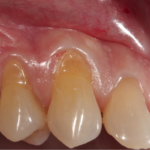
Non-carious cervical lesions have been defined as tooth loss at the cementoenamel junction that is not related to bacteria. There is debate regarding their aetiology which is considered to be multifactorial involving attrition, abrasion and erosion. There is also variation in their classification and diagnosis and wide variation in reported prevalence rates.
The main aim of this review is to estimate the worldwide prevalence of non-carious cervical lesions (NCCLs) in the adult population.
Methods
Searches were conducted in the PubMed/Medline and Cochrane Central Register of Controlled Trials (CENTRAL) databases. Cross-sectional studies conducted in adults ≥ 16 years of age reporting the prevalence of NCCLs diagnosed by dental care professionals and published in English were considered. Two reviewers independently screened and selected studies and extracted data. Methodological quality was assessed using the Joanna Briggs Institute’s checklist for analytical cross-sectional studies. An overall weighted mean prevalence percentage was calculated.
Results
- 24 studies involving 14,628 patients were included.
- Age range of the populations studied ranged from 16 to 75 years.
- Most studies used visual or tactile clinical examination.
- 7 studies were considered to have a high risk of bias, 5 substantial risk, 8 moderate risk and 4 a low risk of bias.
- Meta-analysis was not conducted due to study heterogeneity.
- NCCL prevalence ranged from 9.1% – 93%.
- Weighted mean prevalence of NCCLs among the whole studied population = 46.7 % (95 %CI; 38.2 to 55.3 %).
- Populations older than 30 years had a higher weighted prevalence (53 %) than those younger than 30 years (43 %).
- South America had the highest reported prevalence of NCCLs (69%), the United States the lowest (19%).
- 54% of the general population had NCCLs compared with 44% in dental populations.
Conclusions
The authors concluded: –
The worldwide prevalence of NCCLs among adults is 46.7 % and higher in older populations than younger ones. The established index also supports the rise in prevalence when compared to visual and tactile clinical examination. South America has the highest prevalence of NCCLs among different geographical regions, and general populations are more inclined to present these lesions than specific ones.
Comments
The reviewers followed the PRISMA and MOOSE guidelines when undertaking this review, two major databases were searched although the restriction in English language articles may have resulted in the exclusion of some relevant studies. Of the included studies 12 were considered to be at high or substantial risk of bias which needs to be taken into consideration when interpreting the findings. Another issue is the definition and diagnosis of NCCLs as differing definitions may contribute to the variation in reported prevalence between the included studies. This is discussed in the review and one of the recommendations is that a standard index needs to be developed to facilitate comparison of results in the future.
Links
Primary Paper
Teixeira DNR, Thomas RZ, Soares PV, Cune MS, Gresnigt MMM, Slot DE. Prevalence of noncarious cervical lesions among adults: A systematic review [published online ahead of print, 2020 Jan 30]. J Dent. 2020;103285. doi:10.1016/j.jdent.2020.103285
Picture credits
By Funkynatsuki – Own work, CC BY-SA 4.0

Background: The restoration of non-carious cervical lesions in geriatric patients is a demanding process. Glass ionomer cements can be promising materials for the management of these lesions in older adults. The aim of this literature review is to present the benefits of glass ionomers and how they can be used for the restoration of non-carious cervical lesions of older adults depending on the geriatric patient s profile. Data sources: All available in vitro and in vivo studies from Google Scholar, PubMed and Scopus search engines corresponding to glass ionomer cements, geriatric dentistry, elderly patients, and non-carious lesions as key words were reviewed. Data synthesis: The advantages of glass ionomer cements, such as good retention and fluoride release, make them suitable for the restoration of non-carious cervical lesions. However, several factors related to the geriatric patient s profile determine the most suitable material type. Conclusion: In general, the resin modified glass ionomer cements (RMGICs) appear to be preferred, but under certain circumstances the use of the conventional product is more appropriate, despite its poorer mechanical features. Further studies are required for more reliable data analysis and clinical interpretation of the relevant results.
The reference for this paper is Kampanas NS, Antoniadou M. Glass Ionomer Cements for the Restoration of Non-Carious Cervical Lesions in the Geriatric Patient.
J Funct Biomater. 2018 Jul 8;9(3). pii: E42. doi: 10.3390/jfb9030042. Review. PubMed PMID: 29986535; PubMed Central PMCID: PMC6164526.
https://www.ncbi.nlm.nih.gov/pubmed/29986535
The Dental Elf has a number of other blogs related to NCCLs
https://www.nationalelfservice.net/tag/non-carious-cervical-lesions/